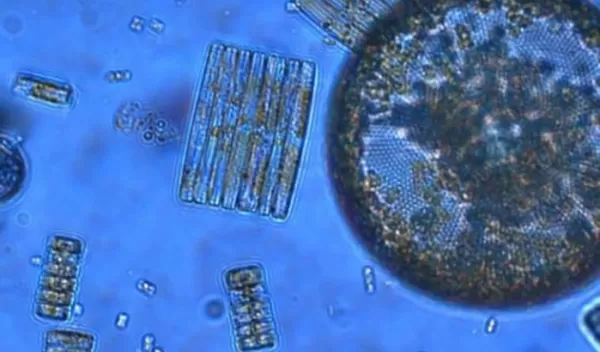
The 'phytoplankton factory' -- from nutrients to algae growth
All life starts at a small scale, including life in the ocean. Microscopic plants called phytoplankton form an important base for the marine ecosystem, and ultimately determine how fish stocks develop and how much atmospheric carbon dioxide is taken up by the ocean. Understanding the base of the marine ecosystem is important for two essential questions for the future of the human population: nutrition and climate.
Scientists at the Scripps Institution of Oceanography, Dalhousie University, the University of Liverpool and GEOMAR Helmholtz Centre for Ocean Research Kiel have developed a new model for studying phytoplankton growth in the ocean. The research was funded in part by the U.S. National Science Foundation and was published in Science Advances.
"As new methods and tools enable detailed analyses of metabolic pathways in phytoplankton cells and micronutrients in the ocean, new models like this will help us generalize to larger scales, and even global cycles, in a changing ocean," said Mike Sieracki, a program director in NSF’s Division of Ocean Sciences.
The model was coupled to metaproteomics -- the study of microbial proteins -- and environmental data to allow accurate predictions of phytoplankton growth rates in the Southern Ocean.
"You can think of phytoplankton growth like industrial manufacturing: materials come into the factory and are processed on assembly lines, creating the final product," said Scott McCain of Dalhousie, lead author of the study. "We asked ourselves how to increase output, or the amount of products leaving the factory." Applied to phytoplankton, that means asking how they can grow faster.
"We found that phytoplankton rearrange their 'cellular assembly lines' to do this," said GEOMAR researcher Eric Achterberg, a co-author of the study. "We were not concerned with the amount of available nutrients, including iron and manganese, that are important for the growth of phytoplankton, but rather with the question of how 'cellular assembly lines' in phytoplankton that process source substances for their growth adapt to changes."
The researchers created a mathematical model of phytoplankton that enabled them to simulate these processes. The model was linked to laboratory and cruise data from the Southern Ocean on metaproteomics, dissolved iron and manganese. "Our results show that cumulative cellular costs determine how environmental conditions change the growth of phytoplankton," said Achterberg.
"That will lead to better predictions of how phytoplankton will grow in the ocean," added McCain. The findings are also important for predictions of the development of fish stocks and of global climate change.


